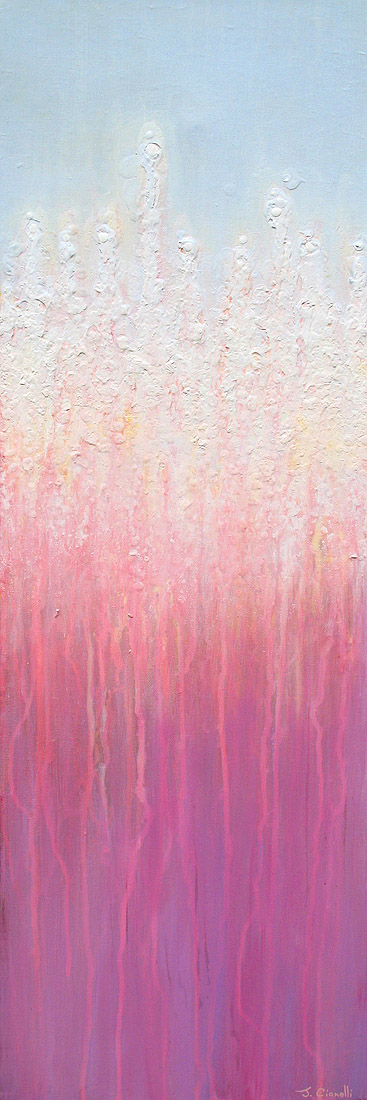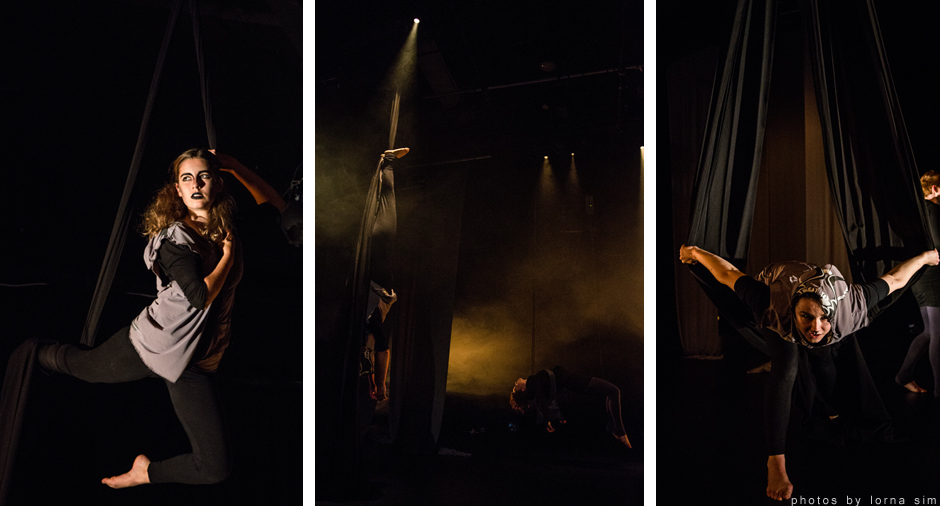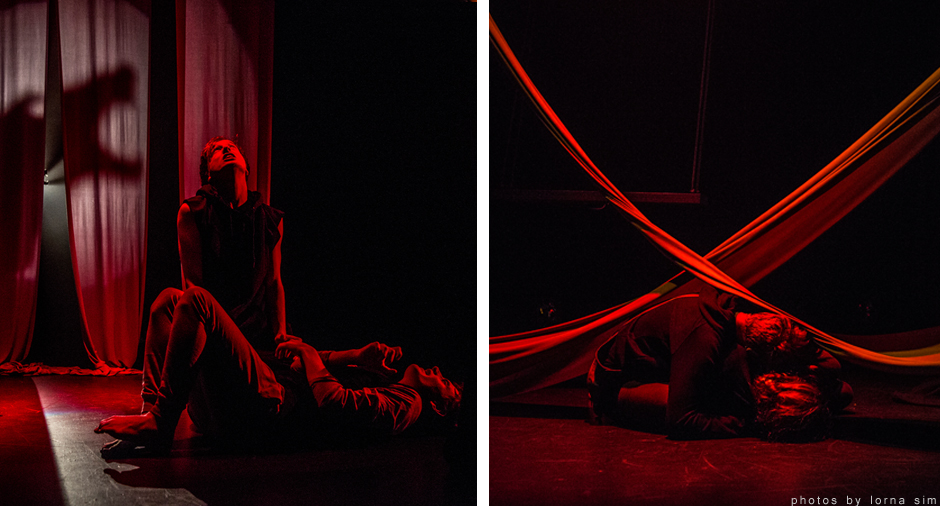AustLit
-
The unit of work below has been created to study Where in the World is Frank Sparrow?, by Angela Betzien. The work covers both practical and theory elements which allow students to build on their knowledge throughout the progress of the unit. The lesson plans are purely examples which are adaptable and have the ability to be re-worked to meet specific class needs and circumstances.
-
 Play Cover by PlaylabSee full AustLit entry
Play Cover by PlaylabSee full AustLit entry"Where in the World is Frank Sparrow? was commissioned by Graffiti Theatre Company, Ireland. It's quirky graphic novel style weaves stark urban reality with the mythic underworld. Against this grim backdrop the young hero, Frank Sparrow, must endure dangers and trials, overcome weakness, find love and face death.
A uniquely modern legend, Where in the World is Frank Sparrow? reinvents the hero's journey for the 21st Century and propels its audience through the dangerous streets of Stab City and into the dark underworld of change and transformation.
(...more)Characters
Chorus
Frank
Voices
Officer
Judge
Lawyer
Parent 1
Stan
Parent 2
Teacher
Rat
Kira
Hare
Nyx
Warren
Kid
Aaron
South Boy
Police
Goat
Old man
Kelly Gang
South Gang
NOTE: The chorus can be played with a minimum of five characters. The chorus can take the role of all other characters.
Themes
The Underworld
The Underground
Animality
Identity
Territory
Gang Violence
Setting
Stab City (Fictional Setting). Setting can be left to the creators interpretation.
Angela Betzien's website link for Where in the World is Frank Sparrow?
-
The aim of this stage is to gain an initial idea of student knowledge. The activities below will assist knowledge building and act as a primary point of reference for the play.
Introductory Activity
This activity allows students to discover the concept of abstract and how and why it is used in literature and dramatic texts. Ask students the following questions:
- Define abstract.
- What are examples of abstract?
- Thinking abstractly, what does it allow us to do? Anything new?
Taking the answers from the questions above, place what was discussed in conversation with the abstract images below:
-
To search for more/other images, check out the below sites:
Introducing the Context
For this activity, provide students with the plot/summary of Where in the World is Frank Sparrow? from the AustLit database. Ask students to consider the possible meanings for the below from the synopsis. Students may want to think abstractly, but also from a Gothic perspective.
- "weaves stark urban reality with the mythic underworld."
- "must endure dangers and trials, overcome weakness, find love and face death."
- "dark underworld of change and transformation."
In addition to the above and to begin (depending on class response), it might be of advantage to discuss the exact meanings and context around the underworld, underground and above ground landscapes in the play. This will assist greatly in trying to define the meanings of the above quotes and understand to a greater extent, the abstract world that is evident in the text.
Furthermore, ask students to put these thoughts and ideas into a practical situation. Students are to choose a quote from above to devise and create a 2 minute performance that brings to life their idea.
Personal Response to Where in the World is Frank Sparrow?
Set two classes aside to read Where in the World is Frank Sparrow?. After reading the play, ask students for homework or as an in class activity to write a critical reflection by drawing upon the play, the activities completed prior and their own thoughts on the text. Ask students to prepare any questions they wanted answered about the text. In the next class, get students to share what they wrote and see if they can answer each others questions.
-
The aim of this stage is to dig deeper into critical thinking, exploration and understanding of the play. Students will draw on their own interpretation and will also concentrate on the hidden messages in the text.
Semiotics of Drama
- Voice: The Delivery of Dialogue – dynamic range, intonation and vocal quality.
- Sound design: The meaning and effects of diegetic and extra-diegetic sounds and music.
- Costume: The appropriateness to individual characters.
- Set design: Consider the use of space vertically/horizontally, colour, mass, texture, flexibility. The conveyed meaning to be explored.
- Lighting: How it is used - realistically/symbolically, passively/dynamically? Consider the relationship to the staging, characters, overall aspect of the play.
- Proxemics: The spatial relationships between actors, actor to set/prop and how it contributes to the meaning.
- Kinesics: The movements of actors and how do they establish character. Furthermore, how is it related to the overall factor of the play.
Consider the below images from the Canberra Youth Theatre production in 2014 and the trailer produced by Markwell presents for All Hallows' School. Either as a class, in small groups or individually, discuss the similarities and differences in the understanding to that of the original text. Provide reasoning and specific examples from both text and visual aid in relation to the semiotics above. Be really and ensure visuals are analysed critically and in a reflective manner.
-
-
To further the close reading skills of the class, select one or as many as needed of the below and get the class to think both critically and reflectively about Where in the World is Frank Sparrow?.
Abstract
- What effect does abstract thinking have on the play?
- Providing examples from the text, what do you think is the playwrights intentions for using abstract concepts?
- What isn't abstract in the play? Discuss the reasoning behind the choice to have these in realistic views.
- What questions are being raised for discussion or further inquiry?
Characters
- How is the Gothic genre represented in the character of Frank?
- In most plays and drama, audiences/readers get to know the character through the individual. How do we get to know the characters through the play? What impact does this have?
- Who is the hero of the play?
- Take the scene at the end that involves Frank, Kira, Warren and Nyx. What effect does Frank and Kira, in this situation, have on the rest of the play? What is becoming evident?
- What is the personal journey of the chorus? Where do they go? What is their objective? What do they suggest throughout the play?
Language
- What is the purpose of rhyme?
- When does rhyme work and when doesn't it work? Is there no rhyme in one section that could use rhyme to enlighten the mood?
- Provide an example where language enhances the animality of the text.
- Is the language used in the play reflective to the form of the Gothic genre?
- Pick a character and describe the style of their language? What does it reveal about them?
Animal
- It is evident that almost every character has a relation to an animal. What does the animal they, so call embody, reveal about them?
- Anthropomorphic imagery is consistently used within the play, to what extent does this imagery utilize the genre of the Gothic?
- Think of the language, themes, characteristics etc., of Kira and the Chorus. Also, think about the South Gang and Kelly Gang in regard to their representation and involvement in the play. What animal would you give these four characters? Why? Use the text to assist.
- How are animals in the play abstract?
- Think about the symbolism/representation of a Sparrow. Is it included in the text? If yes, how is it included? What impact does it have? If not, what isn't clear? Should he be named Frank Sparrow?
- Are the chorus of animal nature?
-
The aim of this stage is to understand the multiple perspectives and/or layers of the play. This will allow students to gain insight into its significance and idea that the play text offers in hindsight.
The below questions explore examples of intertextuality in the text. Angela Betzien wrote in her Writer's Notes that she explored the plays of Romeo and Juliet and A Midsummer Night's Dream, the myth of Orpheus, the stories of Peer Gynt, Under Milk Wood and the graphic novels by Neil Gaimon. By drawing on personal experiences and understandings, readers can also connect with the myth of The Changeling.
The below will need time in a computer lab to explore the necessary information about the various texts. Select intertextual examples that will be relevant to the applicable teaching grade.
Romeo and Juliet
- What connections can be made between the two texts?
- Do Frank and Kira embody characteristics of Romeo and Juliet? Is it simply just a story line connection?
- Consider the prologue from Romeo and Juliet and the opening chorus scene from Where in the World is Frank Sparrow?? What similarities can we see? What is different? Do we get an equal amount of 'what's to come' from the chorus scene to that of the prologue? Discuss as a whole class.
The Changeling
- Which character best suits the trope of The Changeling? Why? What new insight is given?
- Discuss the trope in regard to the opening and closing stage directions of the play text.
A Midsummer Night's Dream
- What would be the relationship between the two texts? Explore this with examples from the play.
- Both plays feature heavily in the world of contrast, how is this depicted in Where in the World is Frank Sparrow??
- Can we see a similarity in the social commentary that William Shakespeare and Angela Betzien present in their plays?
Orpheus
- By providing examples from the play, which character portrays the figure of Orpheus?
- What part of the Orpheus tale is best reflected in Where in the World is Frank Sparrow??
Peer Gynt
- As the myth portrays a strong sense of self-idenity, is there any connection to how each, myth and text, goes about the search of identity?
- Why would the playwright have selected this piece of work as a starting point for the play?
- Is there an abstract view that we can draw upon from the myth of Peer Gynt?
Under Milk Wood
- In what aspect does the chorus relate to the story of Under Milk Wood?
- How does Under Milk Wood add to this abstract concept evident in the text?
Neil Gaimon and Graphic Novels
- What graphic novels best reflect the world of the play? (starting point - The Sandman)
- What common themes do these graphic novels explore that are evident in the play?
- How is Where in the World is Frank Sparrow? a "quirky graphic novel"? Provide reasons.
After the theory component is complete, students will perform snippets from the play that best reflect what they have learnt. This will allow a physical representation to be had and will allow students to engage with key concepts and ideas that are hidden or reflect as by an intertext.
-
The aim of this stage is to finalise and expand on information and knowledge taught throughout the unit of work. This stage is most useful for assessment purposes and therefore, would allow teachers to assess students ability and comprehension of Where in the World is Frank Sparrow?.
Forming
- At the end of the session before the next class, give students their improvisation task to work on. This improvisation task will assess students ability to think creatively in a short time frame and be able to communicate dramatic meaning through their interpretation. For the purpose of the improvisation performance, ask students the following question (this will be their topic):
Where in the world is Frank Sparrow in life after the play?
Where in the world is Kira in life after the play?
Presenting
- Split students into small groups to create a performance piece. Ask students to select scenes/sections from the text that they enjoy or in which they see a potential to do something different with (whether theatrically or meaningfully). Students will need to place these scenes into a new time context (change of setting and decide to set it in the past or future). The timing of the performance will be between 4-5 mins and must include all members of the group. Furthermore, the presentation must be cohesive, well-rehearsed and polished.
Responding
- Students are asked to write a 300-400 word critical analysis responding to one of the production images above. Students will need to discuss the following - how is symbolism used and what effect does has on the play? Students should also use specific scenes from the text in conversation with the image as well.
Please Note: These are only examples and can be altered, changed and/or adapted to individual teaching needs.
-
The above class work and assessment will allow students from Grade 8 and above to meet the requirements of most, if not all content bands and descriptors listed within the national curriculum. Below is the standard that students of Grade 8 must meet in order to receive a passing mark.
"By the end of Year 8, students identify and analyse how the elements of drama are used, combined and manipulated in different styles. They apply this knowledge in drama they make and perform. They evaluate how they and others from different cultures, times and places communicate meaning and intent through drama.
Students collaborate to devise, interpret and perform drama. They manipulate the elements of drama, narrative and structure to control and communicate meaning. They apply different performance styles and conventions to convey status, relationships and intentions. They use performance skills and design elements to shape and focus theatrical effect for an audience." (ACARA).
You might be interested in...









